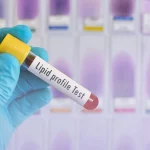What is costochondritis?
Costochondritis is inflammation in the cartilage that joins your ribs to your breastbone.
Although it usually gets better after a few weeks, it can sometimes last longer.
What are the symptoms of costochondritis?
Costochondritis causes a constant pain and tenderness in your chest. The pain usually comes on gradually.
The pain often gets worse if you:
- cough
- sneeze
- breathe deeply
- move in certain ways
- put pressure on your chest
You might put pressure on your chest by using a tight seatbelt or hugging someone.
The pain is usually on one side of your breastbone and affects more than one rib.
It might feel like you’re having a heart attack. If you are in doubt, see your doctor as soon as possible. If you have chest pain and have trouble breathing, feel sick or are sweaty, dial triple zero (000) for an ambulance.
Costochondritis is sometimes confused with a rare condition called Tietze syndrome, which has similar symptoms but also causes chest wall swelling.
What causes costochondritis?
There is usually no obvious cause for costochondritis.
Sometimes it can be due to:
- a lot of coughing
- a chest injury
- physical strain from exercise or lifting something heavy
- an infection
When should I see my doctor?
It’s important to see your doctor as soon as possible if you have chest pain. Your doctor can assess your symptoms. They can work out the likely cause and whether immediate treatment is needed.
If you have chest pain and have trouble breathing, feel sick or are sweaty, dial triple zero (000) for an ambulance.
How is costochondritis diagnosed?
Your doctor will ask about your symptoms and what tends to make them worse.
Your doctor will examine you. As part of the examination, they will check to see if gentle pressure on the joints where the ribs meet the breastbone causes pain. They will also check to see if movement makes the pain worse.
To help with the diagnosis, you may also be asked to have:
- blood tests
- x-rays or other scans
- an electrocardiogram
How is costochondritis treated?
Costochondritis usually gets better by itself in a few weeks.
While you have the condition, avoid activities that make it worse, such as reaching up into a high cupboard or strenuous exercise.
You can ease the pain of costochondritis by:
- avoiding strenuous activity
- applying a heat pack
- gentle stretching
- taking anti-inflammatory medicines such as ibuprofen



